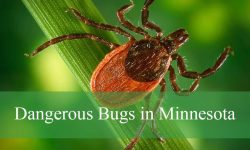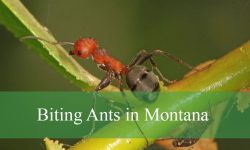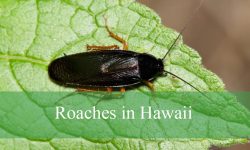If you live in California, chances are you’ve come across a spider or two around your home or garden. While most species are harmless and even beneficial for pest control, a few can deliver venomous bites that cause pain, swelling, or more serious reactions.
California’s diverse habitats—from dry deserts to coastal regions—provide ideal conditions for several venomous spiders to thrive. Knowing how to identify them can help you avoid unnecessary encounters and protect your family and pets.
This guide covers 10 of the most poisonous spiders in California, complete with identification features, habitat details, and safety tips. You’ll also learn how to prevent spider bites and handle potential infestations safely and effectively.
Types of Poisonous Spiders Found in California
Desert Recluse (Loxosceles deserta)
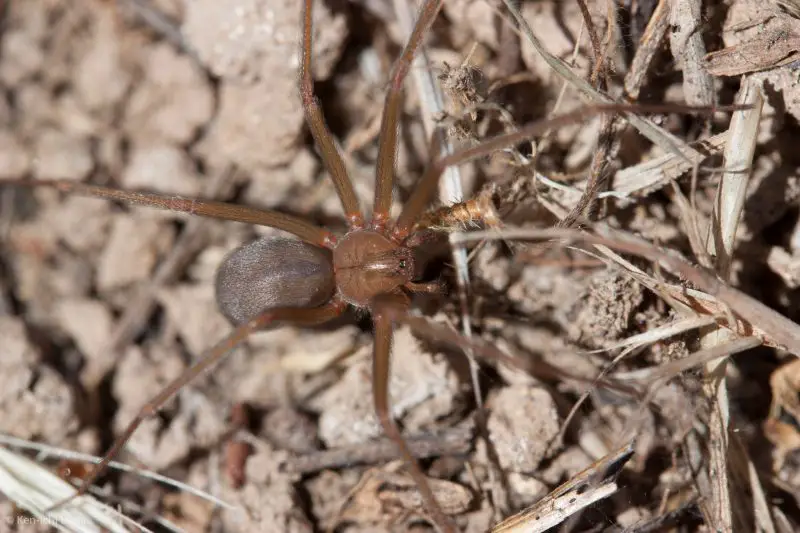
The Desert Recluse is a medium-sized, light brown spider native to the arid regions of Southern California. It can be recognized by its violin-shaped marking on the cephalothorax, with the “neck” of the violin pointing toward the abdomen. Adult Desert Recluses measure about 0.5 inches in body length, with long, slender legs giving them a span of nearly 1.5 inches. Their uniform tan or golden coloration and fine hairs make them blend easily into sandy or rocky surroundings.
These spiders are highly reclusive and prefer to hide in dry, undisturbed locations. They inhabit rock crevices, piles of wood, leaf litter, or debris in desert environments. Around human dwellings, they may take shelter in sheds, basements, or behind furniture. They are nocturnal hunters, feeding on small insects and other arthropods. Their shy behavior means they rarely come into contact with people unless accidentally provoked.
The venom of the Desert Recluse is cytotoxic, containing enzymes that destroy skin and soft tissue. A bite may initially go unnoticed but can develop into a blister that progresses to an open sore or ulcer, taking weeks or months to heal. Systemic symptoms such as fever, chills, and malaise can occur in severe cases, though they are uncommon. Medical attention is always advised for suspected bites due to the risk of infection and tissue damage.
In California, the Desert Recluse is primarily found in desert regions including the Mojave and Colorado Deserts. It avoids coastal and mountainous areas, preferring the dry, warm climate of the state’s southern interior. Despite its fearsome reputation, confirmed bites are relatively rare because the spider is not aggressive and usually retreats when disturbed.
Western Black Widow (Latrodectus hesperus)
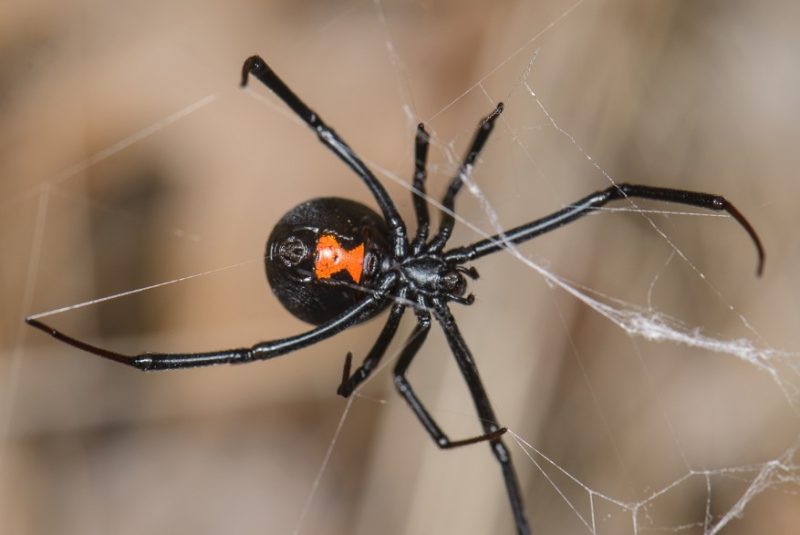
The Western Black Widow is considered the most venomous spider in California and one of the most recognized arachnids in North America. Female widows display a glossy jet-black body with a striking red hourglass marking on the underside of their rounded abdomen. Males, on the other hand, are much smaller, lighter in color, and have faint red or white streaks on their backs. Adult females typically measure around 1.5 inches across including leg span, while males are about half that size.
These spiders construct irregular, sticky cobwebs in dark, sheltered areas close to the ground. They are nocturnal hunters, preferring to stay hidden during the day and becoming active at night. Western Black Widows are frequently found in garages, sheds, woodpiles, crawl spaces, and under outdoor furniture — places that provide shade and protection. They are solitary creatures and rarely leave their webs once established.
The venom of the Western Black Widow contains a potent neurotoxin known as latrotoxin, which affects the nervous system. While bites are rare and often occur only when the spider is threatened, the symptoms can include intense muscle pain, cramps, sweating, nausea, and in severe cases, difficulty breathing. However, fatalities are exceedingly rare due to the availability of effective medical treatment and antivenom.
Western Black Widows are widespread throughout California, particularly in the southern and central regions. They thrive in both urban and rural areas, adapting well to human-made environments. Despite their reputation, they are generally non-aggressive and will bite only as a last resort when disturbed or trapped against the skin.
Chilean Recluse (Loxosceles laeta)
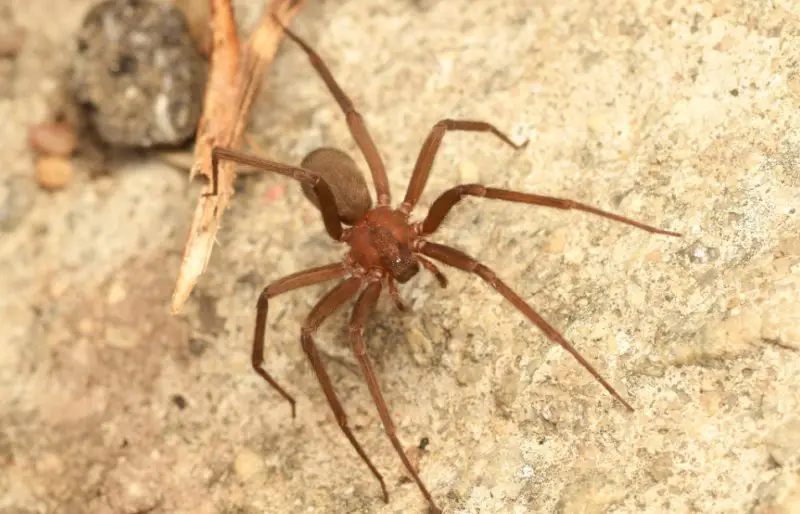
The Chilean Recluse, though not native to California, has become an established species in parts of Southern California, especially in Los Angeles and Orange counties. It closely resembles the Desert Recluse but is generally larger, with adults reaching up to 0.75 inches in body length. Its body color ranges from light to dark brown, and it bears the same violin-shaped marking on its cephalothorax. The legs are long and slender, lacking prominent spines, which helps distinguish it from other house spiders.
This spider thrives in quiet, undisturbed indoor spaces where it can remain hidden for long periods. It often resides in attics, closets, behind furniture, or within cardboard boxes that are rarely moved. Chilean Recluses prefer warm, dark environments and are mostly nocturnal, venturing out at night to hunt for small insects and other soft-bodied prey. Because of their secretive nature, infestations can go unnoticed for years.
The venom of the Chilean Recluse is among the most potent of all recluse species, containing necrotic toxins that destroy tissue and blood vessels. A bite can result in severe skin lesions, fever, chills, nausea, and systemic illness in rare cases. Although deaths are extremely uncommon, medical intervention is critical to manage tissue damage and prevent secondary infections. The initial bite is usually painless but develops into a serious wound within hours or days.
In California, the Chilean Recluse is limited in distribution but poses a significant threat in localized infestations. It has been reported mainly in urban and suburban areas where it benefits from indoor shelter. Due to its resilience and adaptability, this species continues to spread slowly through residential zones, making awareness and prevention essential for residents in affected regions.
Brown Widow (Latrodectus geometricus)
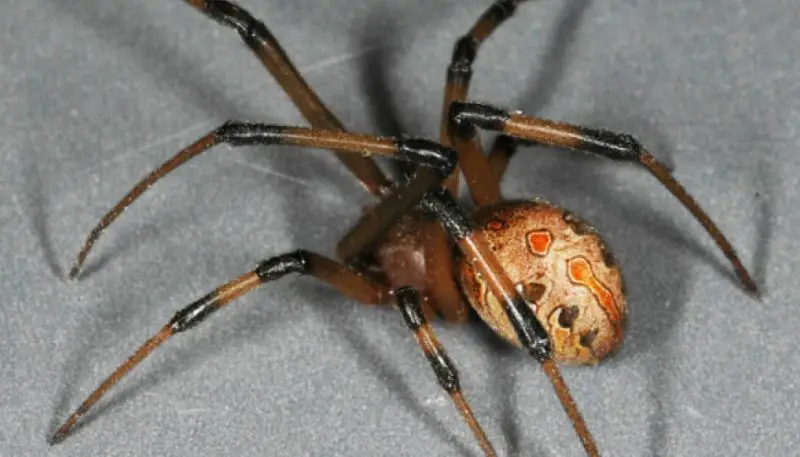
The Brown Widow is a close relative of the infamous Black Widow and has rapidly expanded its range across coastal and southern California. It is easily recognized by its tan to dark brown body with black mottling and a vivid orange or yellowish hourglass marking on the underside of the abdomen. The legs are often banded with light and dark rings. Adult females reach about 1 inch in total length, while males are smaller and more delicate in appearance.
These spiders are most active during warm months and construct irregular webs in sheltered outdoor locations. Common hiding spots include patio furniture, mailboxes, eaves, fences, and garden pots. They often live close to human habitations and are less reclusive than their black widow relatives. Despite this, Brown Widows tend to retreat rather than bite when disturbed, relying on their web for protection.
The venom of the Brown Widow is neurotoxic but significantly less potent than that of the Western Black Widow. A bite may cause localized pain, stiffness, or mild muscle spasms, but serious systemic effects are rare. Most symptoms resolve within a day or two without medical intervention. The spider’s egg sacs are distinctive, appearing spiky or tufted, unlike the smooth sacs of other widow species.
Brown Widows have become common across southern coastal California, from San Diego to Santa Barbara. They thrive in urban areas and have largely displaced the native Western Black Widow in many locations due to their prolific breeding and tolerance for human environments. Although less dangerous, they should still be handled with caution, as their bite can be painful and distressing.
Western Desert Tarantula (Aphonopelma chalcodes)
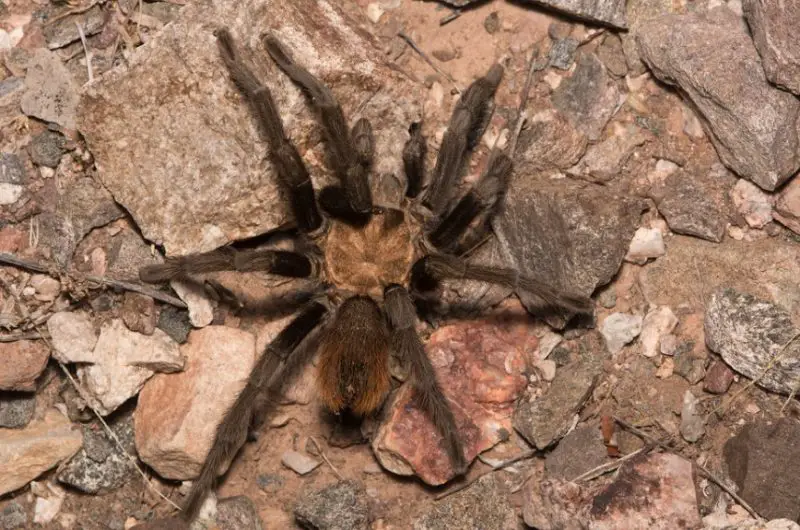
The Western Desert Tarantula, also known as the Arizona Blond Tarantula, is one of the largest spider species found in California’s desert regions. Females are typically tan or light brown with a robust, hairy body measuring up to 2 inches in length, while males are darker and more slender. Including their leg span, adults can reach 5 inches or more, giving them an intimidating appearance. Despite their size, they are generally docile and slow-moving.
These tarantulas inhabit arid and semi-arid landscapes across Southern California, especially in desert foothills, scrublands, and grasslands. They live in burrows dug into the ground, which they line with silk to prevent collapse. During the day, they remain inside to avoid the heat and emerge at night to hunt insects, small lizards, and other invertebrates. Males are most often seen wandering during late summer and fall in search of mates.
The venom of the Western Desert Tarantula is mild and not considered medically significant. A bite may cause localized pain and swelling, similar to a bee sting. When threatened, they often use defensive behaviors such as rearing up or flicking urticating hairs from their abdomen, which can irritate the skin and eyes of predators or humans. Tarantula bites are rare and typically occur only when the spider is handled roughly.
This species is distributed across Southern California’s desert areas, including the Mojave and Sonoran Deserts. It plays an important ecological role in controlling insect populations and serves as prey for birds, mammals, and reptiles. Despite their intimidating look, Western Desert Tarantulas are gentle giants of the desert — fascinating but largely harmless to humans.
Woodlouse Hunter (Dysdera crocata)
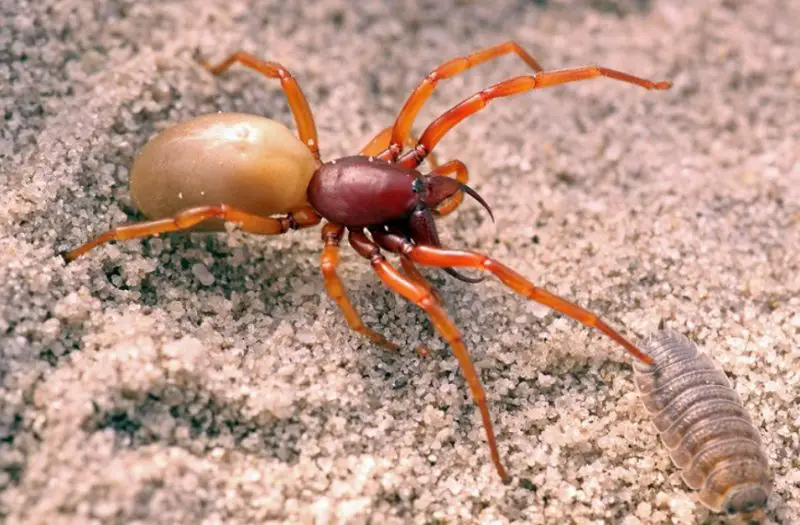
The Woodlouse Hunter is a striking spider easily recognized by its reddish-orange cephalothorax, pale beige abdomen, and large, powerful fangs. Adults typically measure about 0.4 to 0.6 inches in body length, with females being slightly larger than males. Its elongated body and long, spiny legs give it a fierce appearance, and the prominent fangs are specially adapted for piercing the hard exoskeletons of woodlice, also known as pillbugs or sowbugs.
This species is most active at night and spends the day hiding under logs, stones, plant pots, and garden debris. It prefers moist, shaded environments where woodlice are abundant. In California, Woodlouse Hunters are frequently found in gardens, basements, and crawl spaces, occasionally venturing indoors during cooler months. Unlike many other spiders, they do not build webs to catch prey but rely on speed and strength to overpower their victims.
When threatened or handled, the Woodlouse Hunter can deliver a painful bite. The pain results mainly from the spider’s strong jaws rather than the venom itself. Symptoms typically include localized redness, swelling, and mild soreness that subsides within a few hours or days. Serious reactions are extremely rare, and medical attention is usually unnecessary unless allergic symptoms occur.
In California, the Woodlouse Hunter is widespread throughout both coastal and inland regions. It is considered beneficial to the ecosystem because it helps control populations of woodlice and other small arthropods. Although intimidating in appearance, it poses minimal danger to humans and prefers to flee rather than fight when disturbed.
Yellow Sac Spider (Cheiracanthium inclusum)
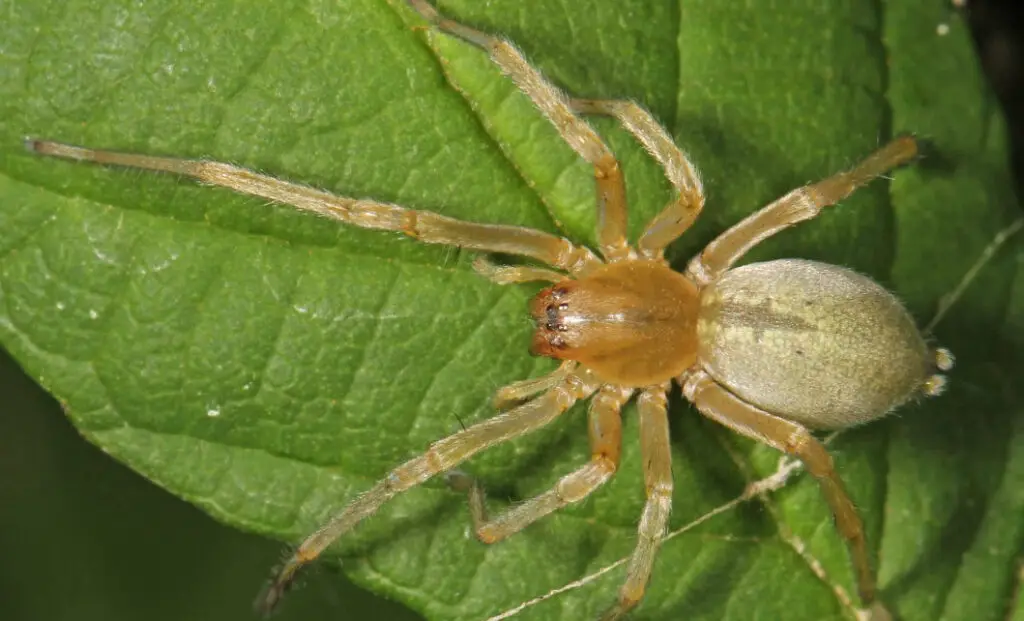
The Yellow Sac Spider is a small, pale species often found inside homes throughout California. Adults are typically light yellow, beige, or pale green, with long, thin legs and no distinct markings. Females measure around 0.25 inches in body length, with slightly longer legs giving them an elegant, delicate appearance. Despite their harmless look, they are known for their occasional defensive bites.
These spiders are common in both outdoor and indoor environments. Outdoors, they hide in rolled leaves or under bark; indoors, they build small silk sacs—hence their name—where walls meet ceilings or behind picture frames and furniture. They are nocturnal hunters, preying on small insects and other spiders. Because they live close to human spaces, accidental contact often leads to bites during sleep or household cleaning.
The venom of the Yellow Sac Spider is cytotoxic and can cause mild to moderate skin irritation. A bite typically produces an initial burning pain followed by redness, swelling, and sometimes a small blister. In rare cases, minor necrosis may occur, but it heals without serious complications. Symptoms usually resolve within a few days, and over-the-counter treatments are sufficient for most cases.
The Yellow Sac Spider is found throughout California, particularly in urban and suburban areas. Although their bite can be unpleasant, these spiders play a helpful role by preying on household pests such as flies and moths. Their presence indoors can be alarming, but they are not considered a major health threat to humans.
Wolf Spider (Hogna carolinensis)
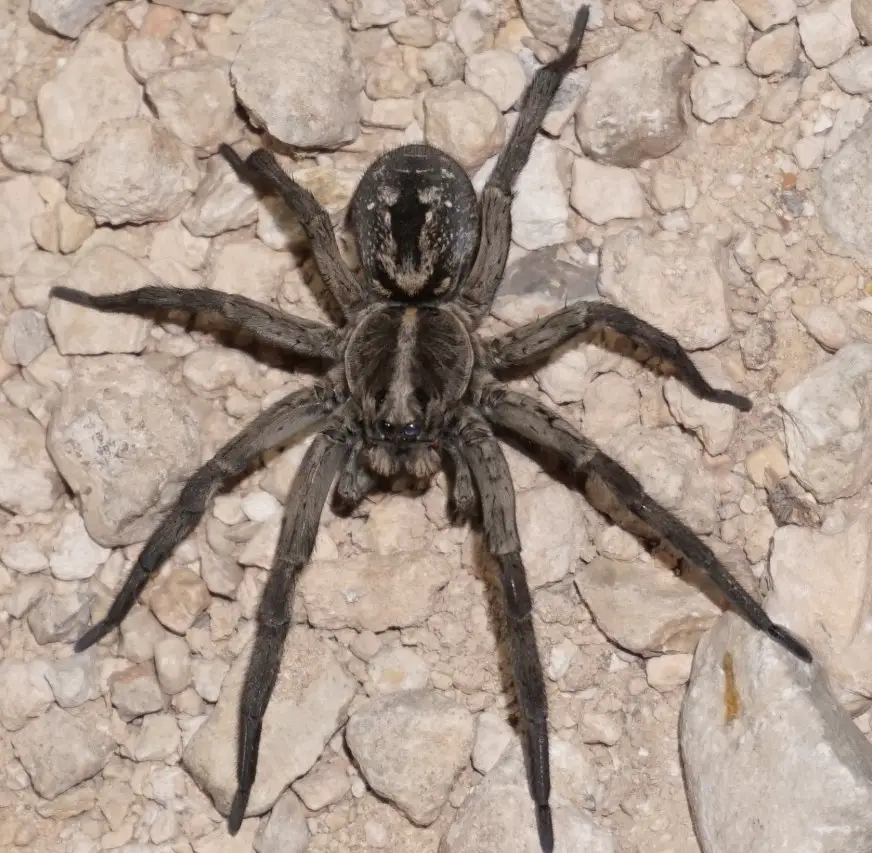
The Wolf Spider is one of the largest and most impressive spider species in California, known for its hairy body, excellent vision, and swift movements. Adults range from 0.75 to 1.5 inches in body length, with robust legs that give them a formidable look. Their coloration is typically brown or gray with darker stripes or patterns that help them blend into their environment. They are easily identified by their eye arrangement—a row of four small eyes below two large, reflective ones, and two medium eyes above.
Unlike web-building spiders, Wolf Spiders are ground hunters that actively chase down their prey. They rely on keen eyesight and speed to capture insects and other small arthropods. Females carry their egg sacs attached to their spinnerets, and after hatching, spiderlings ride on their mother’s back until they are ready to disperse—a behavior unique among spiders.
Wolf Spider bites are rare and occur mainly when the spider is cornered or accidentally pressed against the skin. The venom is not dangerous to humans but can cause moderate pain, redness, swelling, and itching. Symptoms usually subside within a few days. These spiders are not aggressive and typically retreat quickly when approached.
In California, Wolf Spiders are widespread, inhabiting grasslands, deserts, forests, and suburban gardens. They play a beneficial role in controlling insect populations, particularly crickets and beetles. Though often mistaken for more dangerous species, they are generally harmless and best left undisturbed to continue their natural pest-control duties.
Orb-Weaver Spider (Araneus diadematus)
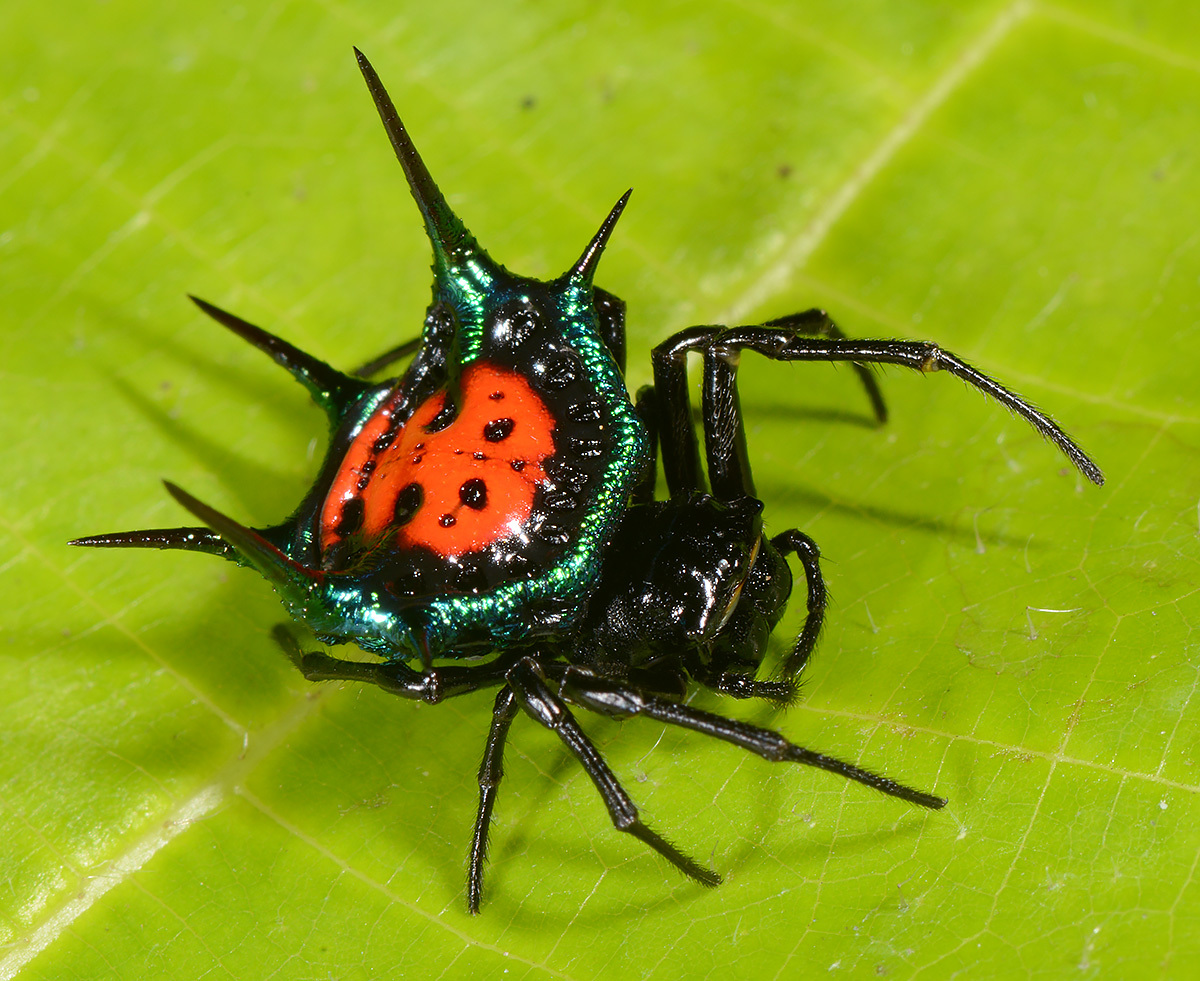
The Orb-Weaver Spider is one of the most common and recognizable garden spiders in California. It is known for its large, intricate, circular webs that glisten with dew in the morning sun. Adults have rounded abdomens marked with a distinctive white or pale cross pattern on their backs, giving rise to the nickname “Cross Orb-Weaver.” Females can reach up to 0.8 inches in body length, while males are smaller and more slender.
These spiders are usually found in gardens, wooded areas, parks, and near human structures where insects are plentiful. They rebuild their webs nightly, waiting motionless in the center or hiding nearby, connected to the web by a signal line. Orb-Weavers feed on flying insects such as mosquitoes, flies, and moths, making them valuable allies for natural pest control.
Although they possess venom to subdue prey, Orb-Weavers pose no danger to humans. Their bites are extremely rare and typically cause only mild irritation or minor redness. They are docile and non-aggressive, preferring to drop from their webs or retreat when disturbed rather than bite.
Throughout California, Orb-Weaver Spiders are abundant from coastal gardens to mountain valleys. Their bright colors and large, elegant webs make them easy to spot in late summer and fall. These spiders contribute significantly to ecosystem balance by reducing insect populations and should be appreciated rather than feared.
Ground Spider (Zelotes spp.)
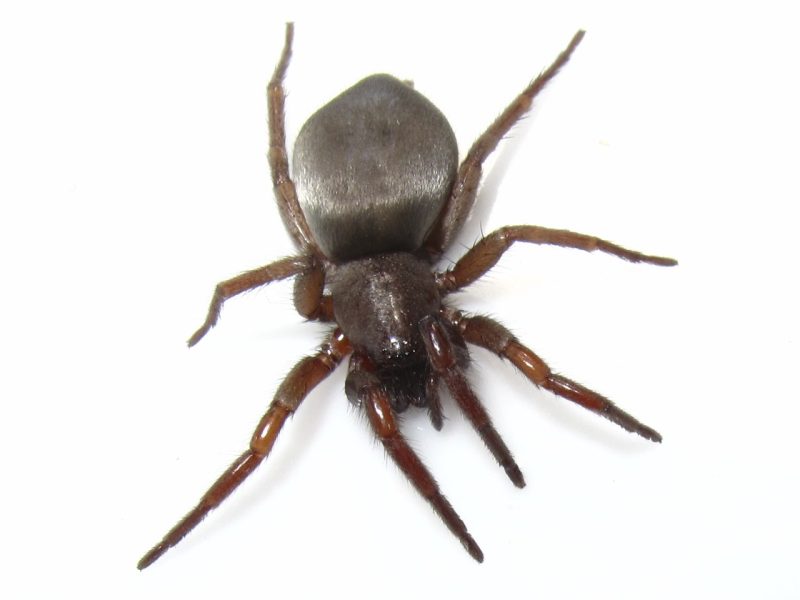
Ground Spiders are small, fast-moving hunters belonging to the family Gnaphosidae. They are typically dark brown or black with smooth, elongated bodies and glossy cephalothoraxes. Adults measure about 0.25 to 0.5 inches in body length and have short, powerful legs built for speed rather than web-spinning. Their nocturnal nature and low-to-the-ground hunting style make them less noticeable to most people.
As their name suggests, Ground Spiders spend most of their time on or near the ground, hiding under rocks, bark, leaf litter, and debris during the day. At night, they actively roam in search of prey, ambushing insects and other small arthropods. They do not spin webs for trapping but may use silk retreats for resting or protecting egg sacs. Around homes, they can occasionally be found in basements, garages, or under outdoor furniture.
Ground Spider venom is designed to immobilize small prey but has minimal effects on humans. A bite may cause mild pain, itching, or localized redness, but serious reactions are virtually unheard of. Their secretive habits make human encounters rare, and they usually flee when disturbed.
These spiders are widespread throughout California, from coastal regions to dry inland habitats. They are beneficial predators that help control insect populations naturally. Despite their speed and dark coloration, which sometimes alarm people, Ground Spiders are harmless and play an important role in maintaining ecological balance.
Tips to Prevent Spider Bites in California
Taking a few simple precautions can greatly reduce your chances of encountering venomous spiders in California. Many bites occur accidentally when people disturb spiders hiding in dark or cluttered areas. Follow these preventive measures to stay safe both indoors and outdoors.
Shake Out Shoes, Clothing, and Bedding Before Use
Spiders often hide in shoes, folded clothes, and bed linens, especially when left untouched for a while. Always shake out your garments and bedding before use—particularly if they’ve been stored in closets, garages, or basements. This simple habit can prevent unexpected bites from hidden spiders like Black Widows or Yellow Sac Spiders.
Keep Storage Areas Clean and Clutter-Free
Messy or dusty areas provide perfect hiding spots for spiders. Clean out your garage, basement, and storage spaces regularly. Use sealed containers instead of cardboard boxes to store items. Reducing clutter eliminates the dark corners and crevices that attract spiders seeking shelter.
Seal Cracks, Gaps, and Crevices in Doors, Windows, and Foundations
Many spiders enter homes through small openings. Inspect and seal cracks in walls, door frames, window sills, and around utility lines. Installing fine mesh screens and using weather stripping can further reduce spider entry points, keeping them outdoors where they belong.
Use Gloves When Gardening or Handling Firewood
Spiders frequently live in woodpiles, rocks, or debris around yards. Always wear gloves when gardening or moving firewood. This protects your hands from bites, especially from species like the Black Widow or Desert Recluse that prefer hiding under objects close to the ground.
Regularly Check Outdoor Furniture, Sheds, and Basements
Outdoor furniture, sheds, and basements are prime spots for spider activity. Inspect these areas frequently, shaking out cushions and clearing cobwebs. Regular cleaning and vigilance help discourage spiders from making these spaces their long-term homes.
FAQs About Poisonous Spiders in California
Are there brown recluse spiders in California?
True Brown Recluse spiders (Loxosceles reclusa) are not native to California. However, related species like the Desert and Chilean Recluse are found in limited areas.
What should I do if I get bitten by a spider?
Clean the bite with soap and water, apply ice, and monitor for swelling or severe symptoms. Seek medical attention if pain worsens or necrotic lesions appear.
Which spider causes the most dangerous bites in California?
The Western Black Widow is responsible for nearly all medically significant spider bites in the state.
Can spiders in California kill humans?
Fatalities are extremely rare. With proper medical care, bites from venomous species like the Black Widow or Recluse are treatable.
Do spiders invade homes in California often?
Yes, especially during colder months when they seek warmth. Brown Widows and Yellow Sac Spiders are among the most common indoor invaders.


